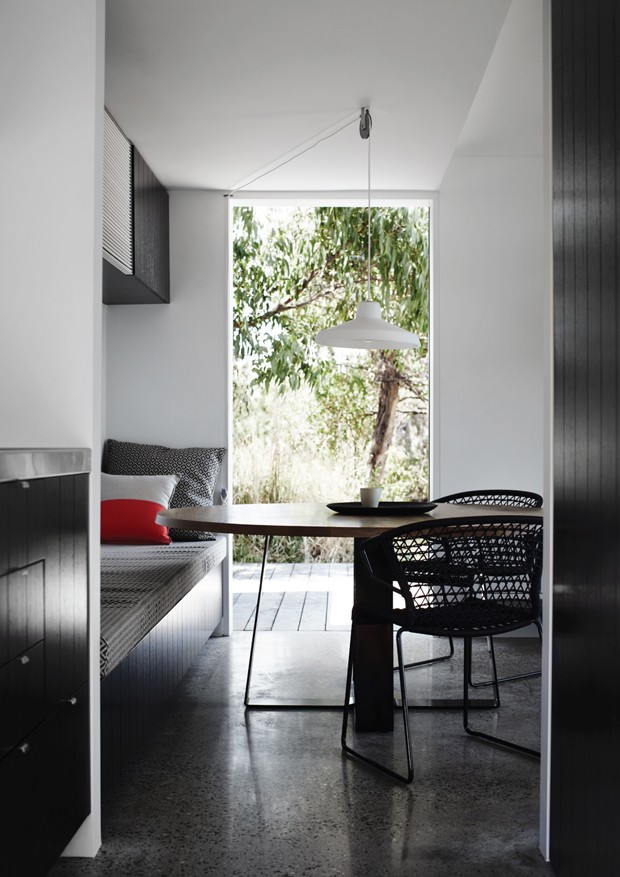
A freight or a house? The Pod in Victoria is made of staggered boxes
Designed by Whiting Architects, this guesthouse near the Great Ocean Road removes all traces of archetypal house elements and dares to be different.It appears that uniformity of architecture could be a thing of the past. Where a few decades ago stood a row of neat buildings that ‘kept it together’, not one with its toe out of line, today we see more and more buildings that dare to be different – Zaha Hadid’s creations front the campaign for fluidity and modernity, Frank Gehry divides opinions with his curves, and Pritzker Prize winner Shigeru Ban makes cardboard cool.
But the title of quirky and creative is not under the claim of ‘star-chitects’ and international practices, and Melbourne based Whiting Architects proves it with The Pod – a project they entered into this year’s Victorian Architecture Awards under the Residential Architecture – Houses (new) category.
A small, standalone three storey guesthouse and weekend getaway that sits next to the larger family home, The Pod is located on a steep site near the Great Ocean Road in Victoria. Access to views and the sun informs the design, which sees timber and concrete boxes stacked on top of each other, supported by a steel frame. Reminiscent of crates ready to be loaded and dispatched by sea, the building loudly asks, “Am I a freight or a house?”

Unlike many projects, this house is deliberately seen as a man-made object that sits in opposition against the landscape. All traces of archetypal house elements have been removed to produce a subtle blurring of the line between art and commerce.
A strong, sculptural form was desired by the client, who has an engineering-infrastructure background. According to Whiting Architects, “the building ‘is’ what he does” and will generate long-term gratification rather than a momentary punch line.
The design therefore played to the client’s strengths: concrete and steel is used, in-filled with lightweight construction and clad in compressed cement dressed with straps to create a more 3D look, thus avoiding the standard sheet-cladding look.



Two 22 tonne concrete boxes were trucked to site and craned into position, assisted by the client himself. The same process was applied for the steel and precast concrete components, which were formed offsite and then craned in, creating a platform for the lightweight-infill, and getting the team out of the mud instantly.
A central part of the process was working with the elements – sun, breezes, shade and shadow – and getting the orientation right. Elevation and the framing of views have been gained by an effective use of the natural topography, while the architects sought to impact the landscape as little as possible.

Although glass is featured heavily, it was kept sustainable by working with solar heat gain in winter to passively warm areas, and offset by the ability to open up the entire building to catch sea breezes and allow warm air to escape.
Concrete was also chosen because it has good thermal mass properties, enabling the team to build a combined wall and roof structure in the form of the box, which was prefabricated and transported in as a completed element.
The Pod, which has a 6 star rating, no doubt achieves what it has set out to do: inspire a second look. Seemingly random, but cleverly undone, it is a solid counter-point to the open views of the opposite ocean.


Photography by Sharyn Cairns and Carole Whiting
- Popular Articles






